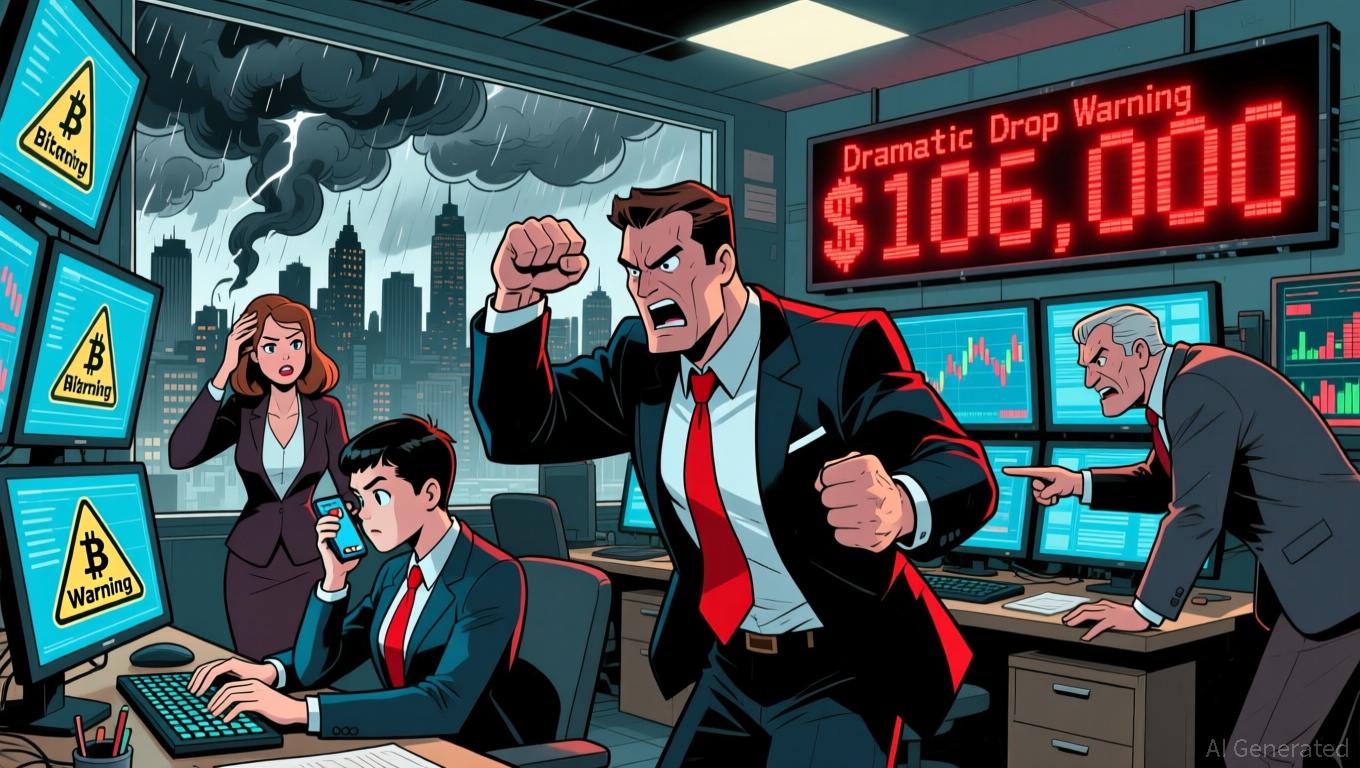Zcash Halving Event: Deflationary Dynamics and the Evolution of Cryptocurrency Valuation Approaches
- Zcash's 2024 halving reduced block rewards by 50%, triggering deflationary dynamics and reshaping market perceptions through Bitcoin-like scarcity models. - Privacy features (27% shielded transactions) and institutional adoption (Grayscale Zcash Trust) amplified Zcash's appeal amid 92% price gains post-halving. - 2025 PoS transition stabilized mining economics but risks miner consolidation as block rewards halve again to 0.78125 ZEC per block. - Zcash exhibited counter-cyclical price surges (750% in late
Deflationary Dynamics and Value from Scarcity
Zcash’s system reduces block rewards every 1,680,000 blocks, or about every four years, to control inflation and simulate the rarity of limited resources. The halving in November 2024 lowered block rewards from 3.125
Zcash’s deflationary appeal is further strengthened by its privacy options. Shielded transactions, which use zk-SNARKs to hide transaction details, made up 27% of all transactions in 2025, according to Bitget. This combination of limited supply and privacy has drawn a distinct group of investors, including institutions like Grayscale, which introduced a $137 million Zcash Trust in 2025, Bitget noted.

Mining Profitability and Network Stability
The halving has a dual effect on mining: it forces miners to adjust to smaller rewards, which may push some to depend more on transaction fees or leave the network altogether. Additionally, Zcash’s move to a proof-of-stake (PoS) system in 2025 has helped stabilize hash rate fluctuations, attracting larger institutional miners looking for eco-friendly blockchain options, Bitget reported. This transition has made the network more secure and reduced energy use, which is increasingly important as environmental standards tighten.
However, experts warn that the 2025 halving—which will cut block rewards to 0.78125 ZEC—could challenge miners’ ability to stay profitable. “The upcoming reduction will likely speed up the consolidation of mining pools,” one analyst observed, pointing out that smaller miners might find it hard to survive, according to Coinpedia. Still, the Electric Coin Company’s roadmap, which emphasizes privacy upgrades and DeFi integration, aims to counteract this by increasing transaction activity, Bitget reported.
Market Trends and Price Outlook
Zcash’s price movement after halvings has been unpredictable. Following the 2024 halving, ZEC climbed 92% by the end of 2025, but price swings continued. In late 2025, ZEC soared 750% from under $50 to $400 as Bitcoin’s price dropped and investors turned to privacy coins, Bitget reported. By early 2026, ZEC briefly surpassed $600—a seven-year peak—driven by retail enthusiasm and new institutional investment products, according to Coinpedia.
Technical analysts point to a “counter-cyclical” trend between Zcash and
Challenges and Regulatory Risks
Despite its
Additionally, not everyone is convinced by Zcash’s deflationary approach. Critics argue that simply reducing supply does not ensure price growth if demand fails to keep up. “Scarcity is a story, not a certainty,” one economist remarked, stressing that real-world use and adoption are key to maintaining value, according to Coinpedia.
Conclusion: Deflationary Strategy in a Changing Market
Zcash’s halving events highlight the increasing role of deflationary models in shaping cryptocurrency values. By merging Bitcoin’s scarcity principle with advanced privacy features, Zcash has established itself in a market that is more focused than ever on utility and compliance. For investors, the 2025 halving offers both promise and warning: while lower issuance could support long-term value, Zcash’s future will ultimately depend on how it navigates regulatory, technological, and market challenges.
As the next halving nears, attention will turn to whether Zcash can sustain its growth in a competitive crypto environment—and if its deflationary structure will continue to support its high valuation.
Disclaimer: The content of this article solely reflects the author's opinion and does not represent the platform in any capacity. This article is not intended to serve as a reference for making investment decisions.
You may also like
Bitcoin Updates: Ongoing U.S.-China Tensions Over Bitcoin Pose Risks to Market Stability Amid Increasing Price Fluctuations
- Bitcoin surged above $106,000 amid corporate buying and ETF inflows, but experts warn of a crash due to geopolitical tensions and regulatory risks. - Michael Saylor's firm added $50M BTC (total $47.5B) while Ripple hit $40B valuation, yet regulatory ambiguity hinders institutional adoption. - U.S.-China dispute over $13.3B stolen Bitcoin froze 0.65% of supply, exacerbating liquidity concerns as ETF flows and Trump-linked investments create mixed signals. - Technical indicators show $100K support but $106

Ethereum Updates: Investors Gather ETH While ETFs See $219M Outflow, Watching for a $3,550 Surge
- Ethereum near $3,324 faces critical juncture with $3,550 breakout risking $892M short liquidation. - $201B tokenized asset dominance and 2,000% institutional AUM growth highlight Ethereum's ecosystem strength. - ETF outflows ($219M) contrast with Solana inflows ($2.1B), signaling shifting institutional sentiment. - Technical indicators show mixed signals: price below 200-day EMA but record-low exchange supply suggests accumulation. - Long-term optimism persists with doubled onchain liquidity and Trump-er
Ethereum News Today: Ethereum’s Steep Decline Ignites Discussion: Immediate Challenges or Strong Long-Term Outlook?
- Ethereum dropped 3.46% to $3,417.77, its largest 24-hour decline since November 2025, amid 184,700 ETH net outflows from centralized exchanges. - Institutional Ethereum ETF outflows and declining staking reserves highlight short-term weakness, though $200B in tokenized assets and 4–6% yield products sustain long-term optimism. - Exchange-held ETH supply hits a two-year low, with Binance balances falling sharply, suggesting increased accumulation and reduced circulating supply pressures. - Bitcoin's 59.25

Canary Capital’s XRP ETF Set for Nasdaq Debut After SEC Approval
Quick Take Summary is AI generated, newsroom reviewed. Canary Capital's Spot XRP ETF (XRPC) received Nasdaq listing approval following its Form 8-A filing on November 10. The ETF is 100% backed by physical XRP and will track the XRP-USD CF Benchmarks Reference Rate Index. The SEC registration and imminent launch mark a major milestone for XRP's institutional legitimacy. The news fueled a recent 12% surge in XRP's price, demonstrating high market anticipation.5References Major milestone for #XRP: The first